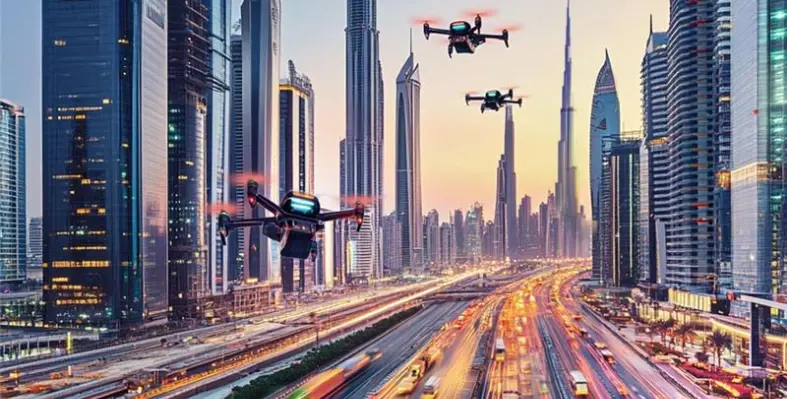The UAE has initiated the process of mapping air corridors and developing a legal framework for cargo drones and piloted and autonomous air taxis, according to a statement from the country's General Civil Aviation Authority (GCAA).
The agreement was announced during World Governments Summit 2025.
The GCAA and the Advanced Technology Research Council (ATRC) organisations, ASPIRE and the Technology Innovation Institute (TII), are collaborating to accomplish this.
These aerial corridors and regulations set to be defined within the next 20 months, with the routes connecting key international airports and iconic places in the UAE.
The statement added that these new air corridors will offer innovative solutions for passenger and cargo transport, relieving pressure on traditional road networks and improving connectivity.
The employment of autonomous aircraft in urban and suburban environments to provide creative transportation options for people and commodities is known as advanced air mobility, or AAM.
Future-focused
This partnership intends to create a comprehensive regulatory framework that guarantees safety and operational efficiency, with TII spearheading the development of AAM's technical aspects and ASPIRE concentrating on building a network of stakeholders, including regulators, industry leaders, and researchers.
His Excellency Saif Mohammed Al Suwaidi, director general of the GCAA, said, “Air corridor mapping for piloted and autonomous air taxis and drones is a crucial milestone that will enable the seamless implementation of Advanced Air Mobility into the UAE’s infrastructure. This initiative ensures the safe and efficient adoption of air mobility, delivering transformative solutions to urban transport and paving the way for a smarter, more connected future.”
Dr. Najwa Aaraj, CEO of TII, said, "This transformative collaboration with GCAA is reshaping the future of urban transportation. By advancing airspace management and integrating piloted and autonomous air taxis and cargo drones, we are not only enhancing urban connectivity but also driving sustainable and accessible mobility solutions that will benefit future generations."
Stephane Timpano from ASPIRE, said, "Addressing real-time urban mobility challenges through innovative solutions like air taxis and drones is a major step forward. This initiative directly supports sustainable economic growth by creating a flexible and diverse transport system that eases pressure on urban infrastructure and fosters smarter, more resilient cities."
Prof. Enrico Natalizio, Chief Researcher of the Autonomous Robotics Research Center at TII, said, "At TII, we’re developing advanced AI-powered control, vision and communication algorithms for autonomous systems that enable real-time decision-making for air taxis and drones. Having mastered this technology, we are able to propose methodologies for AAM corridors design to optimise routes, ensure collision avoidance, and integrate seamlessly with urban airspace, marking a key step toward efficient and safe autonomous air mobility in complex urban environments."
Also read: Hellmann introduces automated storage robots





